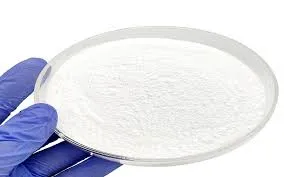Understanding Sodium 3-Chloro-2-Hydroxypropanesulfonate A Comprehensive Overview
Sodium 3-chloro-2-hydroxypropanesulfonate, often abbreviated as Chloropropanesulfonate, is a compound that has garnered attention in various fields including pharmaceuticals, chemical synthesis, and material sciences. This article aims to provide a thorough understanding of this compound – its chemical structure, properties, applications, and safety considerations.
Chemical Structure and Properties
Sodium 3-chloro-2-hydroxypropanesulfonate is a sulfonate salt derived from 3-chloro-2-hydroxypropanesulfonic acid. The molecular formula for this compound is C3H8ClNaO3S. Structurally, it features a three-carbon chain, with a hydroxyl group (-OH) and a sulfonate group (-SO3Na) attached to it, along with a chlorine atom (Cl) on the second carbon. This configuration contributes to its unique physical and chemical properties.
The compound is typically a white crystalline powder that is soluble in water. Its solubility in aqueous solutions makes it an attractive candidate for formulations in various applications. The presence of both a hydroxyl group and a sulfonate group enhances its ability to participate in chemical reactions, making it versatile in synthetic chemistry.
Applications in Industry
Sodium 3-chloro-2-hydroxypropanesulfonate finds numerous applications across different industries due to its functional properties. One primary application is in the pharmaceutical sector, where it acts as a reagent in the synthesis of various drug compounds. The compound's structure allows it to interact effectively with biological molecules, thus facilitating the development of therapeutic agents.
In addition to pharmaceuticals, this compound is increasingly used in cosmetic formulations. Its ability to act as a surfactant and emulsifying agent makes it ideal for stabilizing creams and lotions. By enhancing the texture and spreadability of cosmetic products, sodium 3-chloro-2-hydroxypropanesulfonate contributes to improving user experience.
Another significant area of application is in biochemistry, where it is utilized in protein purification processes. The sulfonate group imparts ionic characteristics to the compound, making it beneficial in various chromatographic techniques. This capability further extends its utility in research and development settings.
sodium 3-chloro-2-hydroxypropanesulfonate

Safety Considerations
While sodium 3-chloro-2-hydroxypropanesulfonate has many advantageous properties, it is essential to consider its safety profile. Like many chemical compounds, exposure to it should be managed appropriately to minimize potential hazards. It is generally considered to be low in toxicity; however, safety data sheets (SDS) should always be consulted for specific handling and storage instructions.
When working with this compound, it is advisable to wear appropriate personal protective equipment (PPE), including gloves and goggles, to prevent skin and eye contact. Furthermore, ensuring adequate ventilation in workspaces can help mitigate any risks associated with inhalation.
Future Perspectives
As research into the applications of sodium 3-chloro-2-hydroxypropanesulfonate continues, there is potential for expanded uses in emerging fields such as nanotechnology and biodegradable materials. Its unique properties might offer solutions for developing environmentally friendly alternatives in various chemical processes.
Moreover, the increasing focus on drug formulation and delivery systems in the pharmaceutical industry suggests that compounds like sodium 3-chloro-2-hydroxypropanesulfonate could play a critical role in innovating advanced therapeutic strategies. Collaborative research efforts between chemists and biologists may further unveil new applications and enhancements of this compound.
Conclusion
Sodium 3-chloro-2-hydroxypropanesulfonate is a multifaceted compound that bridges various scientific disciplines. With its unique chemical structure and versatile applications, it stands out as an important reagent in both industrial and laboratory settings. Understanding its properties, applications, and safety considerations is crucial for scientists and professionals working with this compound. As new research continues to emerge, sodium 3-chloro-2-hydroxypropanesulfonate may pave the way for innovations that have the potential to significantly impact various fields.

